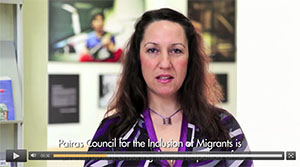 In many European countries, populist and extremist political parties with racist discourses are rising. Not only these parties are fostering clear racist attitudes, but also other parties are adopting some of these discourses “against” migrants for electoral reasons. The economic crisis has added fuel to these strategies, but also the crisis of traditional integration models like multiculturalism and assimilation, that seems unable to explain diversity in positive and collaborative ways. Flirting with racist’s messages doesn’t really stop extremist parties to grow but the contrary, and the consequences are that negative perceptions and hostile attitudes are increasing. And they have a special impact in the local level, as it is in the city where ‘living together’ really happens.
In many European countries, populist and extremist political parties with racist discourses are rising. Not only these parties are fostering clear racist attitudes, but also other parties are adopting some of these discourses “against” migrants for electoral reasons. The economic crisis has added fuel to these strategies, but also the crisis of traditional integration models like multiculturalism and assimilation, that seems unable to explain diversity in positive and collaborative ways. Flirting with racist’s messages doesn’t really stop extremist parties to grow but the contrary, and the consequences are that negative perceptions and hostile attitudes are increasing. And they have a special impact in the local level, as it is in the city where ‘living together’ really happens.
Cities are the closest “areas” to the citizen and they have demonstrated that by driving integration policies and instruments, usually with lack resources but in a more creative and collaborative way, due to partnerships with local associations and NGOs. In cities, perceptions are an important element to facilitate a better coexistence and social cohesion. Many cities have detected how negative stereotypes have been spread through false rumours relating to migrants, and how these stereotypes and prejudices, based on a lack of knowledge, a misinterpretation of reality or a manipulation of information, degenerate in discrimination and racism.
In 2010, the city of Barcelona decided to start a research to contrast the false rumours many citizens were spreading as they were true. The results were very relevant. On this point, the municipality decided to do something about it and the antirumour strategy rapidly grow building a network or more than 300 associations and people working together to counter those false rumors and to send positive messages about cultural diversity (www.interculturalitat.cat).
In 2013, a pilot project to ‘export’ the anti-rumours strategy was developed in four other Spanish cities, confirming the antirumours strategy as a good practice (www.antirumores.com).
A key component of C4i communication process is to integrate the involvement of representatives of receiving communities and migrants in communication planning and implementation so that they become active participants - not just passive recipients of information. Active involvement not only helps to adapt communication strategies and messages to the local context, but also to connect the perspective of migrants and the host community regarding migration issues, with the overall objective to build effective community support for integration policies based on the mutual respect of rights, obligations and cultural diversity.
afd2.png?t=1398437013000)
Visits and meetings
Contacts
Christina Baglai
Project Manager
 +33 390 21 59 37
+33 390 21 59 37
Georgios Klis
Project assistant
 +33 388 41 20 09
+33 388 41 20 09
Elena Dubinina
Communication assistant
 +33 388 41 30 87
+33 388 41 30 87










